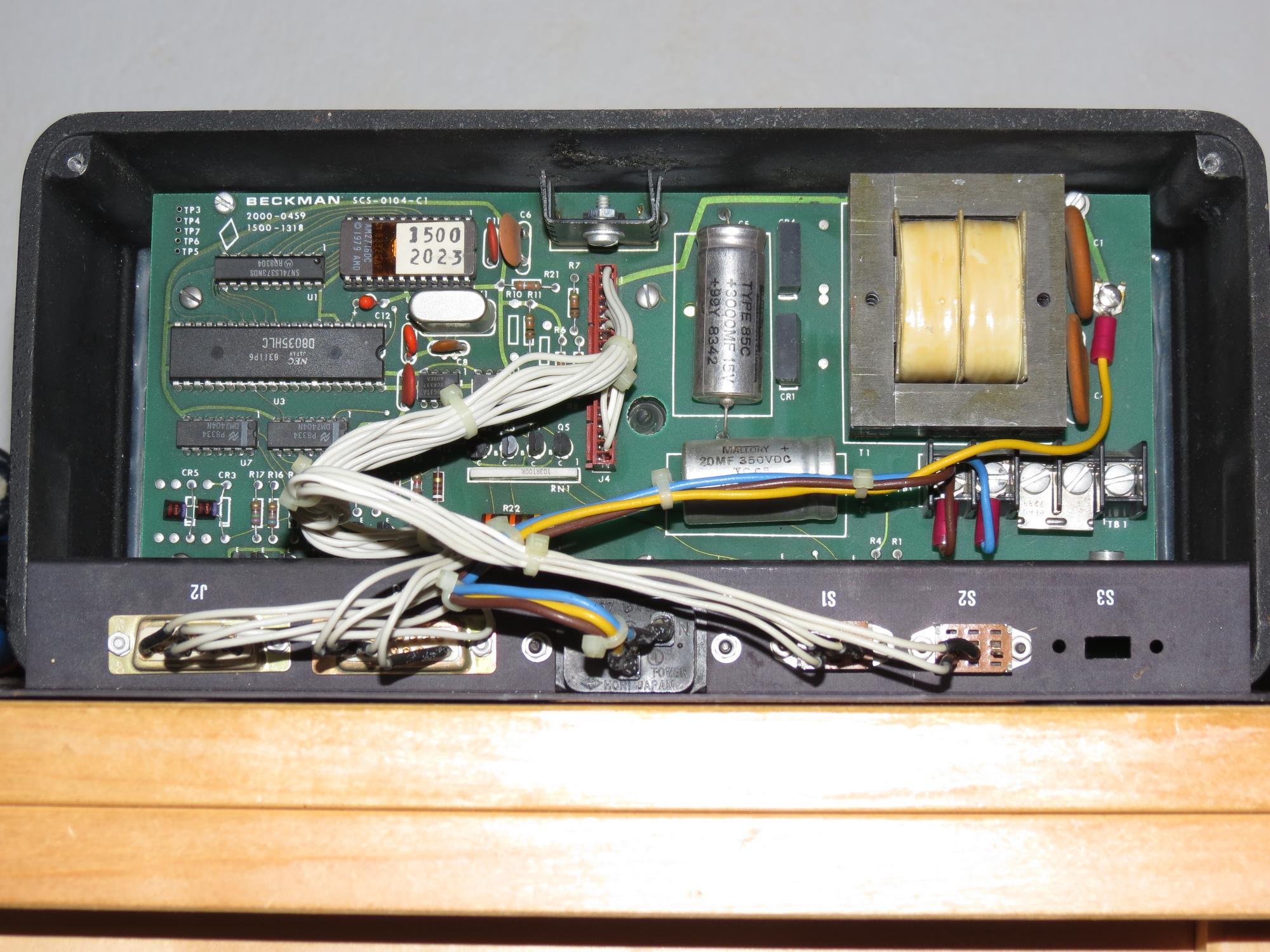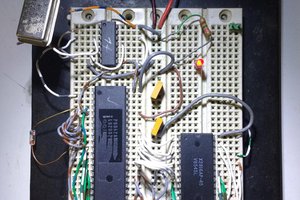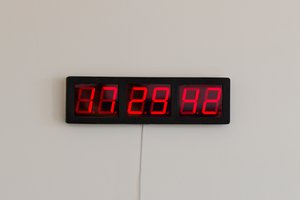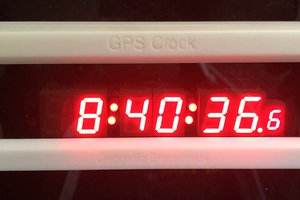Prologue
First off, this is not cutting edge. If anything it's trailing edge.
In the late 1980s I bought a digital clock with large neon digits from a disposals store. I liked that the digits were 5 cm tall and a beautiful amber.
Here's the front of it:

Not very interesting but good contrast perspex. Here's the back of it:

This gave the first hint that it wasn't a conventional digital clock. The input and output connectors suggested that it was meant to run in a clock network.
Opening the clock revealed this:

The transformer provides 5V for the microcontroller via a rectifier capacitor circuit feeding a heatsinked regulator. A separate winding is rectified and filtered to provide the HV for the neon display. The primary of the transformer has two windings which can be jumpered in parallel or in series for 120V or 240V operation. The microcontroller is an 8035, which is essentially an 8048 without ROM. It is driven at 3.579545 MHz. The program memory is in the socketed 2716 chip. The driver transistors are the MPSA42 for the cathodes, and a MPSA42 coupled with a MPSA92 for the anodes. More on this later.
Turning it on got a blinking colon, then after a minute or two, the display would show 00:02. My guess is that on failing to acquire a synchronisation signal it went into free-running mode. The clock gradually lost time.
Beckman is a manufacturer of the Panaplex displays. Enquiries about the provenance of the clock on Usenet (ye olde days) drew a blank. Even now I can find no data about the display panel. My best guess is that the panel was specifically made for this line of clocks, intended to be sold both in the US and international markets.
In the 1990s I acquired an EPROM programmer driven by a PC running DOS. With that I was able to dump the contents of the EPROM with the idea of disassembling the code and working out how to feed it the serial signals it wanted. However reverse engineering machine code is for masochists or people who have to pick apart computer viruses, so I gave that up.
And so matters stood until earlier this year, when I had more time on my hands and decided that the display was too good to leave idle and I should try to made a conventional digital clock out of it by either (1) replacing the 8035 with a modern microcontroller, or (2) writing code and burning a replacement EPROM. The latter course of action required less hardware modifications so I decided to try this first. Thus was born this restoration project.
Stage 1
While casting around for things to make with my ancient 8048 family chips, I came across the 8048 Assembly Code Tomb by Steven Bjork. There was a project for an 8048 digital clock using a MC146818 real time clock chip. I have quite a few of these, extracted...
Read more » Ken Yap
Ken Yap




 Stephen Holdaway
Stephen Holdaway
 Nick Sayer
Nick Sayer
Quite beautiful display!